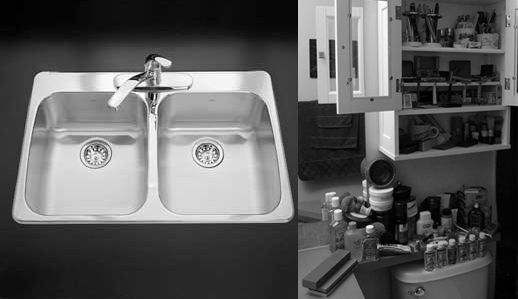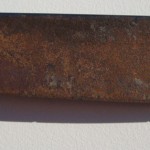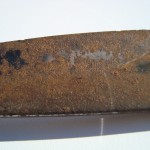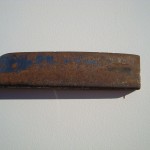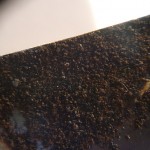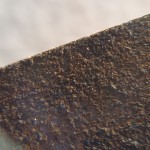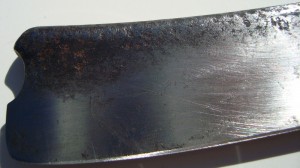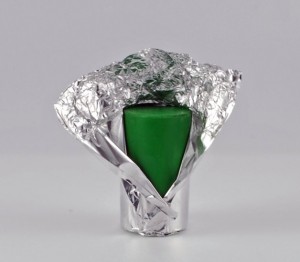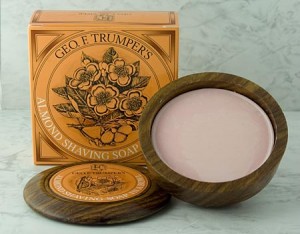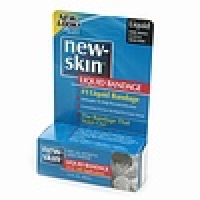Seeing as this is a straight razor blog, most of my readers are probably past their teenage acne years. However, adult acne is a persistent and insidious problem for some people. Not to mention nearly every single young adult ever to walk the face of the planet. So, for those of you suffering from any type of acne, this article is for you.
Preliminary Information
Acne is no joke. It affects millions of people in America alone. Follow this guide and your acne breakouts, nicks, & cuts will be reduced. You’ll also have better skin. A proper shave will help prevent inflammation in the hair follicles, aka shaving bumps (Pseudofolliculitis barbae). These bumps occur because of hair being trapped in the follicle, leading to infection and acne. Acne.com. Most sources agree that exfoliation helps prevent acne. These sources also agree that a non-alcohol astringent after the shave helps prevent acne as well. One person recommends Alpha Hydrox AHA Enhanced Lotion or Sudocrem Antiseptic Cream for a post shave routine. All sources agree that preparation is key. Using quality tools and ingredients reduces the likelihood of breakouts and makes shaving more pleasurable.
Now, on to the article.
Introduction
Acne is a problem I am intimately familiar with. While I did not have terribly bad acne as a teenager, I suffered through breakouts, blackheads, and pimples just like the rest of the world. As a young adult, I was dismayed to continue to have the occasional pimple. Usually connected to stress or bad eating, I continued to have acne for a long time. As you can see, I am intimately familiar with this topic and how to combat both teenage and adult acne. Reading this article, you will learn the best practices for shaving with acne, how to combat acne, and better facial care tips.
This article aims to be a comprehensive guide on how to shave with acne. It will cover the best shaving equipment to use, best practices, and post-shave routines. This article is broken into two parts for length. In the first part, I discuss equipment, wet shaving, and preparation. In the second part of the article, I take you through the shave, post shave routines, and what worked for my acne.
If you have very bad acne, seek professional help. You won’t regret it. If you can’t afford a dermatologist, strongly consider growing your beard out instead of shaving. For those with less severe or adult acne, read on for ASR’s shaving recommendations.
Modern Razors are Junk
The first razor most young men are introduced to is probably either the Gillette or Schick plastic cartridge based razor. So much marketing has been pumped into these brands that it is practically impossible to avoid using one when one first starts shaving. What the razor companies don’t want you to know is that a multi-blade razor is the worst way to shave. Not only can multi-blade cartridges spread bacteria, but they are made using the cheapest method available.
Let’s start with the unsanitary aspect. Multiple blades makes cleaning these razors impossible. An alcohol or disinfectant dip would work wonders in keeping these razors clean, but I’m willing to bet that virtually no one does this. In addition, the construction of the razor makes drying them out equally difficult; a bacteria friendly environment. Combine that with the general humidity of the bathroom and the razor isn’t looking terribly sanitary anymore.
Not only are these razors potential sponges for bacteria, they are not the sharpest tool on the market. Multiple blade cartridges work by first pulling up the hair and then cutting with the subsequent (and equally dull) blades. Perhaps Gillette and Schick can explain why a sharp razor pulls up the hair before cutting; or why a super sharp razor needs five blades to cut a single hair close to the skin. Herbert Goodheart, MD author of Acne for Dummies recommends against modern 2+ blade cartridges. Not only do these razors fail at shaving, they are extremely likely to cut any pimples/breakouts you might have.
The truth Gillette doesn’t want you to know is that a single truly sharp blade will cut the hair in one pass just as closely as five blades in a modern cartridge. In addition, the single blade will only make a single pass over your face, whereas a cartridge goes over your face two to five times in a single swipe. Doing the math, that is 2x-5x more likely to cut open and infect acne breakouts. Do yourself a favor and ditch the modern cartridges. Your wallet and face will thank you.
Not only are these multi-blade cartridges less than razor sharp to begin with, but they go dull incredibly quickly. Razor dullness increases the likelihood of cutting into breakouts – I keep mentioning this because cutting pimples is one of the worst things you can do. When I last used a cartridge over a decade ago, the instructions said to replace the cartridge every five days. While my memory may be foggy, I distinctly remember the cartridges going dull much quicker than the five day replacement plan. I also remember them being horridly expensive.
A better option than multiple blade cartridges are single use disposables. While not as sharp as other options, single use blades don’t run the risk of growing bacteria and since you only use it once, are slightly sharper. They do however, clog up landfills just as multi-blade systems do.
Electric shavers are probably the second most common method of shaving in the U.S.. However, they receive mostly negative, but mixed recommendations. Most sites only recommend them as a final alternative. Best Acne Treatments says stay away from them altogether. Acne.com, however, recommends electric shavers. That said, some people report good results with an electric shaver. We recommend trying other methods first. Dry shaving is not good for your skin and neither are electric shavers. That said, electric shavers do have a much lower risk of cutting or irritating acne breakout areas due to the electric razor’s aversion to giving a close shave. A beard trimmer is a workable solution however; it doesn’t attempt to shave, but rather trims the beard.
 |
DOUBLE EDGE RAZOR Merkur Long Handled Safety Razor 279 Amazon.com reviews |
 |
DE BLADES Feather Double Edge Razor Blades 56 Amazon.com reviews |
Wet Shaving is Better
By far the best option is traditional wet shaving using a double edge or straight razor. Traditional wet shaving is so named because we use water and soap to create our lather instead of squirting it out of a can. Now, don’t get me wrong, squirting lather out of a can is extremely convenient. However, let’s think about this for a second. Shaving gel is canned aerosolized lather. Canned gel’s sole purpose is to lubricate the face so that the blades can cut hairs. Traditional wet shaving is a more intricate process that requires building the lather from water and soap/cream using a badger/boar/horse hair brush. Click here to learn how to shave with a straight razor from start to finish.
Benefits of Traditional Wet Shaving
- Better skin health
- Better exfoliation of dead skin cells
- Cleaner skin
- Greater control over the shave
- Lower cost over the long term
- Higher quality shaving products
- Protect the environment
Traditional wet shaving is better for the very reason that it is wet. Water-logged facial hair is infinitely easier to cut than dry facial hair. The limited water in canned shaving gel is there solely to make sure the lather is still lather. Wet shaving utilizes the water to both soften the hairs and build the lather. In fact, it is said amongst the wet-shaving community gurus that lather’s only purpose is to hold water. Not the other way around. Water provides both the lubrication and the softening agent. In fact, many straight razor shavers use only water for their final pass because it is slicker. The more water comprising your lather, the slicker the shave. Now, I’m not saying that shaving gel doesn’t work. It does. I used it for a long time with a straight razor before I made the switch to badger and soap. Which brings me to my next point: the act of lathering helps exfoliate and lift hairs.
By working the lather into the skin and beard, we exfoliate the skin by scrubbing away dead skin cells. This effect is magnified if you decide to face lather instead of bowl lather. I much prefer face lathering. Its quicker and gets more water on your face. In addition, while applying lather to your face by hand mats the hairs, applying lather by brush raises them up, making for a much closer and easier shave. Finally, traditional shaving soaps provide emollients to your face, moisturizing and lubricating your face.
While all of the above is great and all, perhaps the greatest advantage to wet shaving is the equipment. Unlike a multi-blade cartridge, a DE or straight razor is much less likely to grow bacteria. In the case of a straight razor, the odds are practically zero.
A DE comes apart into its constituent parts. A straight razor only consists of the blade and two scales which protect the blade and user. Cleaning these two time-tested shaving implements is simple and easy. Contrary to what some people think, dry steel is extremely inhospitable to microbes. While we here at ASR firmly believe that you should shave with a straight razor, because it is the best method of shaving, we also understand that it is not the easiest thing to learn. However, if there ever was a good time to learn a new skill, it would be when you first started shaving. That said, the DE makes an acceptable substitute.
What makes these two methods superior to modern cartridges and disposables is the blade quality. Double edge blades are still made using hardened steel. While not built to last like a straight razor, they are still miles ahead of plastic disposable razors. I am not going to explain why a straight razor is sharper than other shaving implements, if you want to learn more browse through my straight razor shaving articles. Suffice to say, straight razors can be even sharper than DE razors due to the better materials, manufacturing, and sharpening process/options.
 |
PRE SHAVE CREAM Proraso Pre Shaving Cream 3.6oz |
 |
PRE SHAVE OIL The Art of Shaving Pre-Shave Oil, Unscented $21.43 |
 |
FACIAL WASH pHisoderm Anti-Blemish Facial Wash (Pack of 4) 58 Amazon.com reviews |
 |
DERMATOLOGIST RECOMMENDED Neutrogena Oil-Free Acne Wash, 9.1 Ounce (Pack of 3) 20 Amazon.com reviews |
Preparation is Key
All authorities on the subject agree. Shaving prep is key to both preventing acne and making the situation worse. Preparation is extremely underrated in today’s world. Not only does a clean face mean less chance of contamination, but washing your face helps to soften the hairs, making for an easier shave. Water logged hair is softer than dry hair; meaning they are easier for the razor to cut through. In addition, daily facial cleansing and exfoliation is key to fighting acne breakouts.
It is essential that you prepare your skin for your shave. Wet hair is more than twice as easy to cut than dry hair. Warm/hot water will soften your beard, resulting in a much more comfortable and less irritating shave. Probably the easiest way to achieve this is to shave at the end of your shower or immediately after exiting the shower. If you can’t manage to shave after showering, try to wash your face before you shave at least.
Each person’s face is different and will respond to different cleansers differently. Choose the right one for you and use it as recommended. Twice daily is enough for most people. And since your already washing your face, you might as well take the time to shave as well. Washing your face before you shave is a great way to prep your beard. You should really think about shaving right after washing your face. I’ll explain how you can save time using this method if you wet shave in a little bit.
The “luxury” barbershop shave method involves wrapping a towel around your face for five minutes, getting a facial massage, and lathering your face once to let the soap sink in before the actual second lather and shave. Obviously that’s a ton of time to invest. The better alternative is to shower. The hot water of the shower will do the same thing that five minutes of hot towel does. Although, admittedly I prefer the hot towel. Barring that, at least wash your face before you shave.
In addition to showering and/or washing your face, you should think hard about using some pre-shave products. While not necessary, users report good results from using these products. Applying a pre-shave oil before shaving will further soften the beard as well as assist with razor glide and offer more protection. Apply pre-shave oil to damp skin. You only need a few drops for your full beard. Massage the oil into the beard, going against the grain very gently. This will help lift your hairs.
If you are wet shaving, you need to soak the badger brush for optimal performance. If you don’t soak the brush, you’re going to have a hard time building a lather without constantly dipping the brush in hot water. Building a good, wet, lather will help the razor glide across your face rather than fight every single hair in a contest to rip your face apart. If you choose to forgo wet shaving, then add water to the canned goo of your choice. The additional water will make the lather slicker and better. Also, try to rub the lather into your beard going against the grain with your fingertips. This helps exfoliate and stick the hairs up. Again, a badger brush works infinitely better.

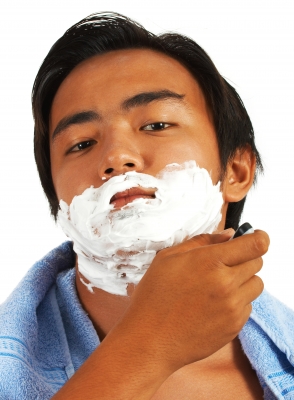
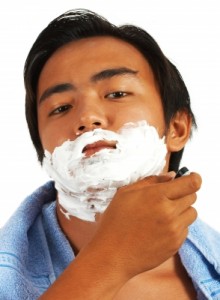

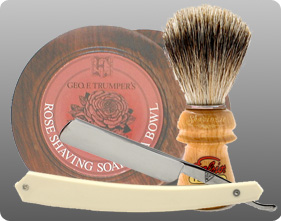
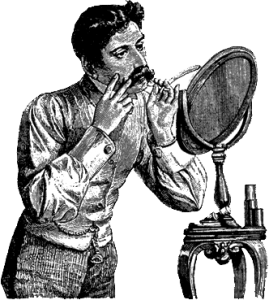











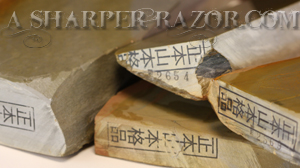
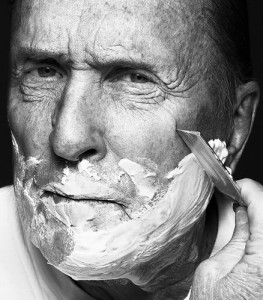
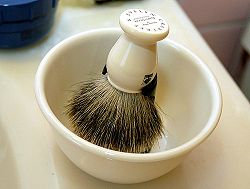
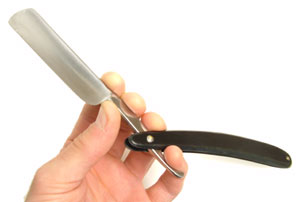 Get a firm grip upon your razor
Get a firm grip upon your razor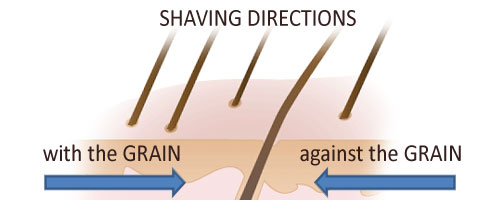
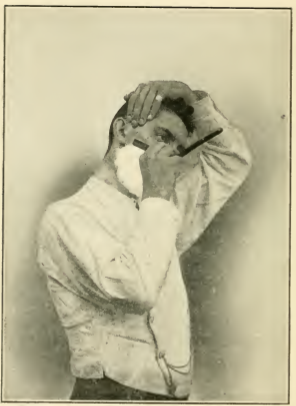 As you can see from the picture, skin stretching is essential (unless your face is perfectly taut). To stretch the skin, follow the picture. You are pulling upward and drawing the razor downwards. In other words, pull in the opposite direction of razor movement. As you shave downwards, move the left hand downwards as the lather is shaved away. Continue until you reach the jawline.
As you can see from the picture, skin stretching is essential (unless your face is perfectly taut). To stretch the skin, follow the picture. You are pulling upward and drawing the razor downwards. In other words, pull in the opposite direction of razor movement. As you shave downwards, move the left hand downwards as the lather is shaved away. Continue until you reach the jawline.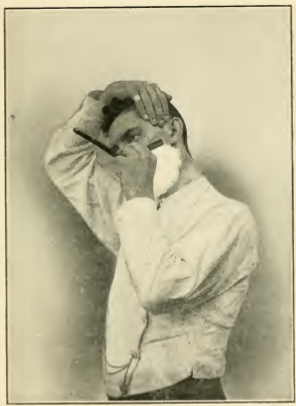
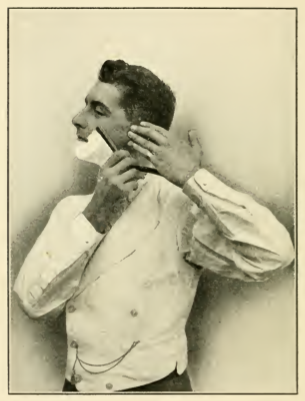
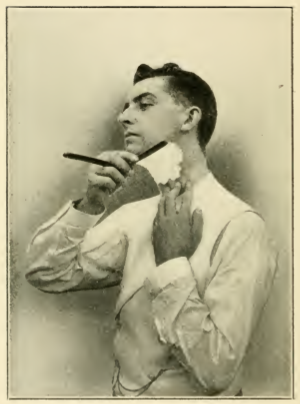
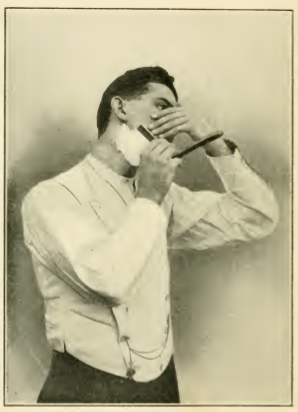
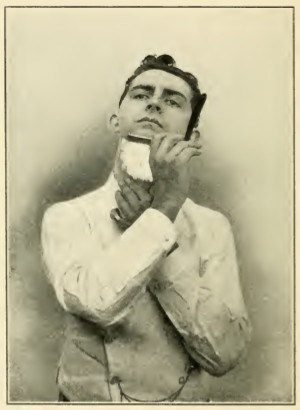 This is most certainly the hardest part. To do it, tilt your head upwards as before and pull down on your throat skin. It helps to shave the neck underneath the chin first. Then, placing the razor just under your bottom lip, shave downwards. Go slowly and take extra care. Not only is this skin extra sensitive, but your chin curves. Don’t go for extra close your first few times straight shaving. Just finish with a DE or disposable. Pride is not worth nicks and cuts.
This is most certainly the hardest part. To do it, tilt your head upwards as before and pull down on your throat skin. It helps to shave the neck underneath the chin first. Then, placing the razor just under your bottom lip, shave downwards. Go slowly and take extra care. Not only is this skin extra sensitive, but your chin curves. Don’t go for extra close your first few times straight shaving. Just finish with a DE or disposable. Pride is not worth nicks and cuts.